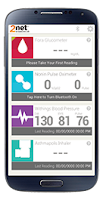SAAS (software as a service) vendors who normally market to businesses have discovered the rich fertile soil of health care. Although many EHR systems afford some level of 'customer relation' they are not as comprehensive, and difficult to access.
Herein lies the unseeded ground for vendors such as Salesforce to provide a full service CRM program for medical offices and clinics, as well as hospitals.
In addition to the need for EHR for clinical use, healthcare business have relationships with hospitals, device manufacturers, pharmaceutical representatives, payors, and government agencies.
Salesforce unwraps platform for post-EHR world | Healthcare IT News
Essentially confirming months of rumors about its intentions to plant a flag in the healthcare market,
Salesforce.com has unveiled Health Cloud.
The software-as-a-service suite features what the company calls "patient relationship management" tools – which are technologically distinct from today's crop of
electronic health record systems.
"We think we are among the pioneers in the post-EHR world," Salesforce chief medical officer Joshua Newman, MD, toldHealthcare IT News ahead of the launch. "We think about this as precision healthcare."
By releasing
Health Cloud, Salesforce is joining the growing crop of platforms that offer more comprehensive views of patient data than electronic health records, though today's class of products doing that each take a different tack.
In addition to managing vendors and other contacts, Salesforce sees itself as expanding into mobile apps to manage patient care.
In our connected world, patients no longer have patience.
Healthcare consumers aren’t content with just office visits (or waiting). Now 71% of millennials want doctors to provide a mobile app to actively manage their health. And 63% are interested in passing on data from wearables to their doctor.
Salesforce Health Cloud takes you beyond records, to connect providers with patients anytime and anywhere. So you gain a more complete view of health data — and your patients become active partners in making informed health decisions.
Salesforce sees itself as the number one 'go to' hub to:
Treat the whole patient with a single view.
Provide 1-to-1 care through a Patient Profile offering a complete view of information from multiple sources, including electronic medical records (EMRs), medical devices, and wearables. And you’ll get a clear view of a patient’s health progression with a Timeline and Patient Caregiver Map listing household relationships, providers, and specialists.
Deliver insightful care faster.
Make patient management easier by browsing tasks matched to each patient, with a Today screen that organizes those tasks based on priority. You can also segment patients, such as those with high blood pressure, and set reminders for check-ins — and checkups. Then securely connect and collaborate in real time across the full health system’s care network.
Treat the whole patient with a single view.
Provide 1-to-1 care through a Patient Profile offering a complete view of information from multiple sources, including electronic medical records (EMRs), medical devices, and wearables. And you’ll get a clear view of a patient’s health progression with a Timeline and Patient Caregiver Map listing household relationships, providers, and specialists.
Designed exclusively for healthcare providers, and built on the world’s #1 CRM platform, Health Cloud was developed in partnership with leading health and medical device companies. These include Accenture, Deloitte, MuleSoft, Persistent, Philips, and PwC.



